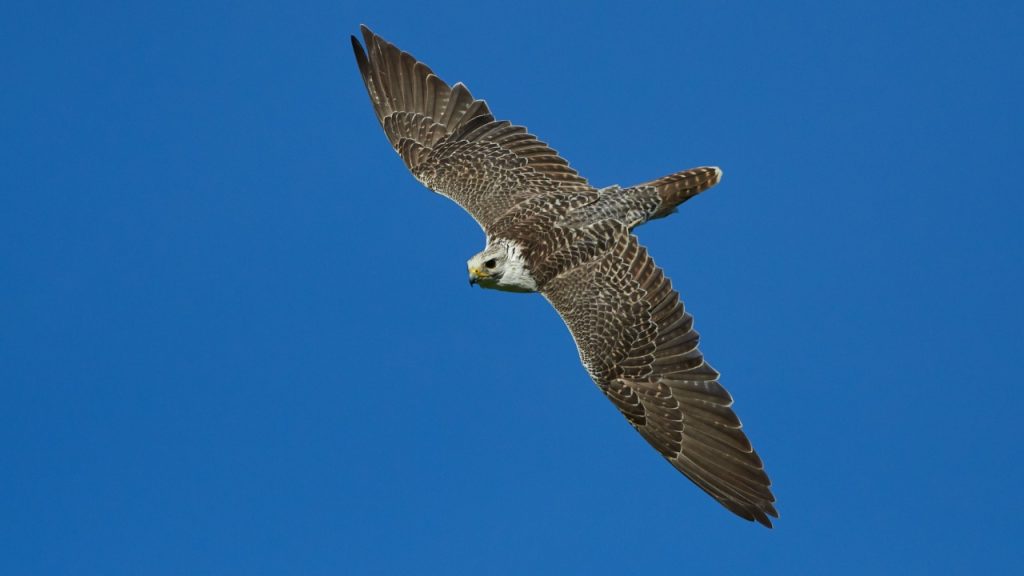The gyrfalcon is an astonishing bird of prey, reigning supreme as the largest and most powerful of all falcon species. These magnificent raptors, with their striking appearance, incredible hunting skills, and ability to thrive in some of the harshest environments on Earth, are truly remarkable creatures. Watching them in action is a breathtaking site to behold. Let’s explore why the gyrfalcon is one of the top aerial arctic predators.
Impressive Size

The gyrfalcon holds the title of the largest falcon species in the world. Females can have a wingspan of up to 63 inches, while males are slightly smaller. Their size gives them a significant advantage when hunting, allowing them to take down larger prey than other falcon species.
Arctic Adaptations
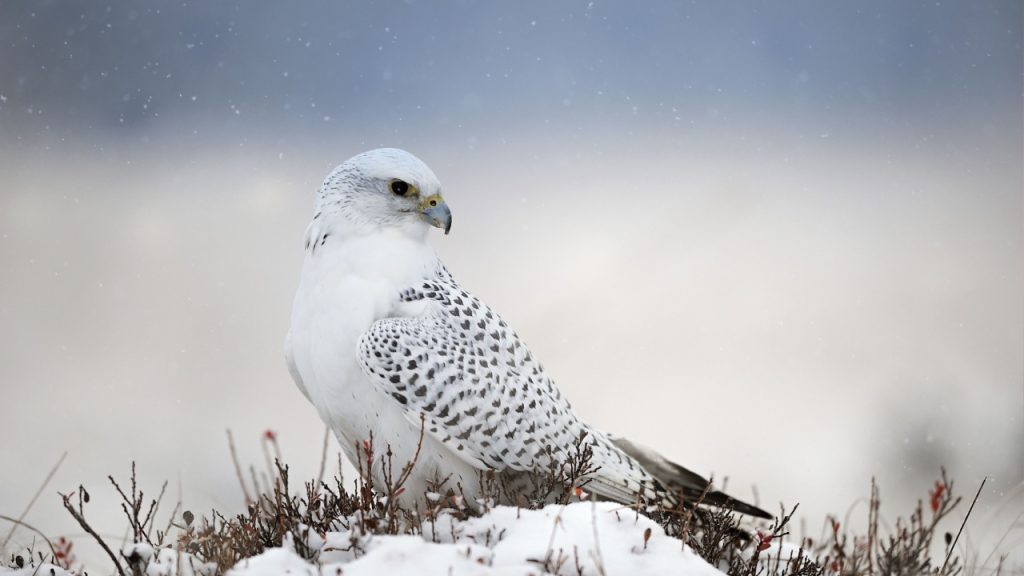
Gyrfalcons are perfectly adapted to life in the harsh Arctic environment. Their thick, downy feathers provide excellent insulation against the cold, while their large feet are covered in feathers to protect them from freezing temperatures. These adaptations allow gyrfalcons to remain active and hunt even in the coldest Arctic winters.
Color Variations
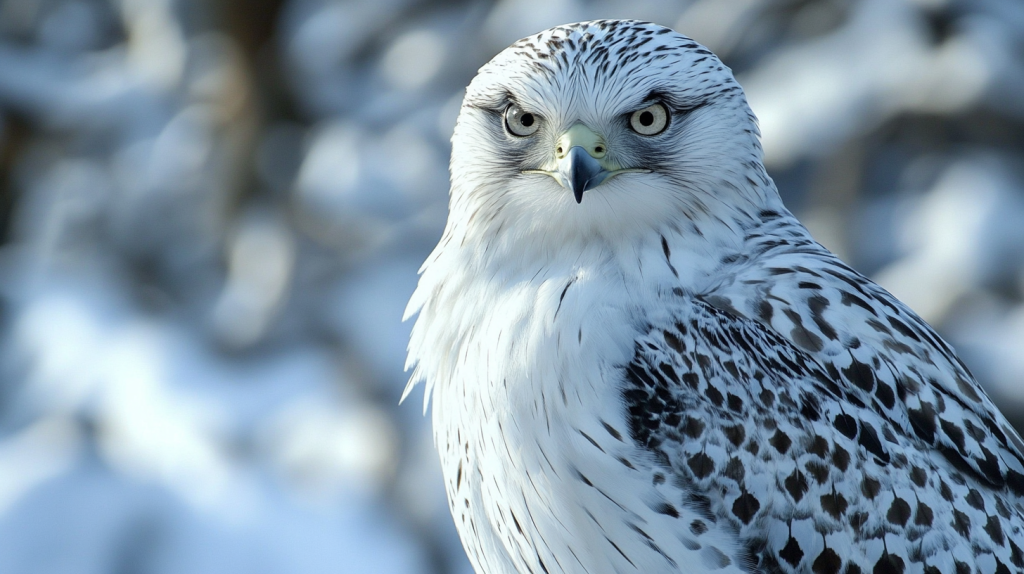
Unlike many bird species, gyrfalcons come in a variety of color morphs. They can be found in shades ranging from almost pure white to dark gray or brown. The white morph is more common in the northernmost parts of their range, providing excellent camouflage against the snowy landscape.
Impressive Hunting Skills
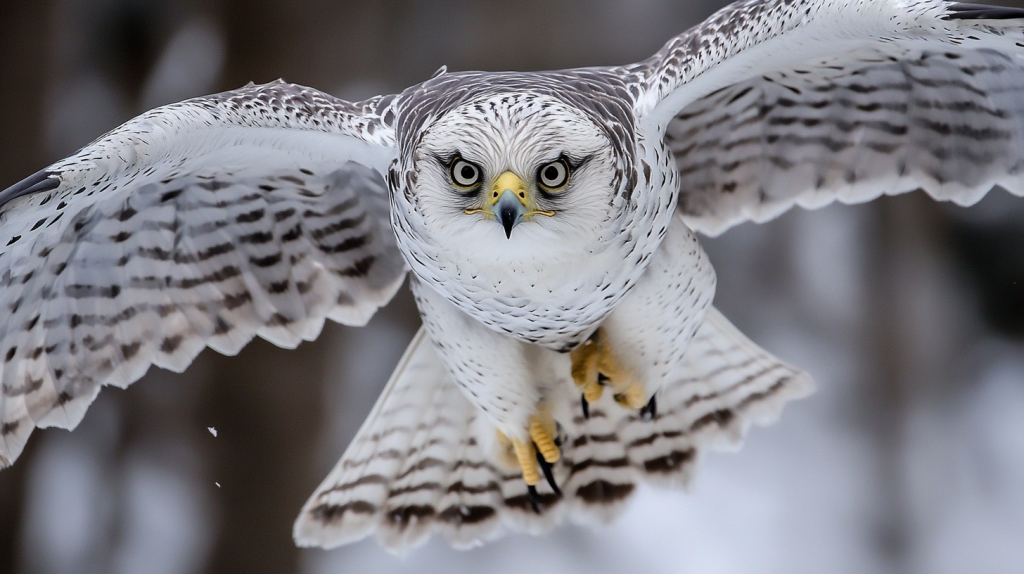
Gyrfalcons are incredibly skilled hunters, capable of taking down prey in mid-air or on the ground. They use their speed and agility to chase down birds in flight, and can also hover and dive to catch prey on the ground. Their powerful talons and hooked beak make short work of their catches.
Preferred Prey
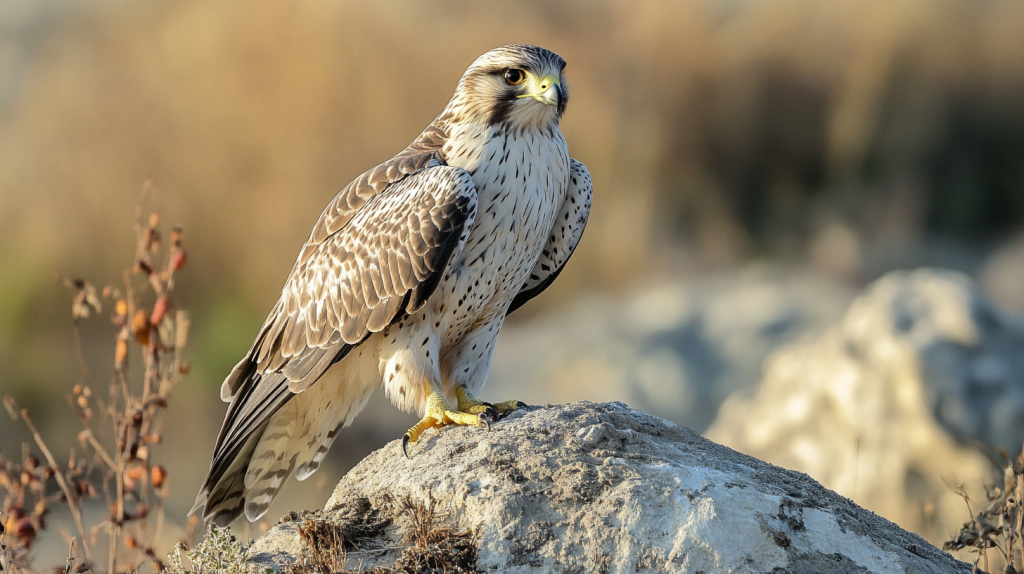
The primary prey of gyrfalcons are ptarmigans and other medium-sized birds. However, these versatile hunters will also take on waterfowl, seabirds, and even small mammals like Arctic hares and lemmings. Their varied diet helps them survive in the often harsh and unpredictable Arctic environment.
Extreme Speed
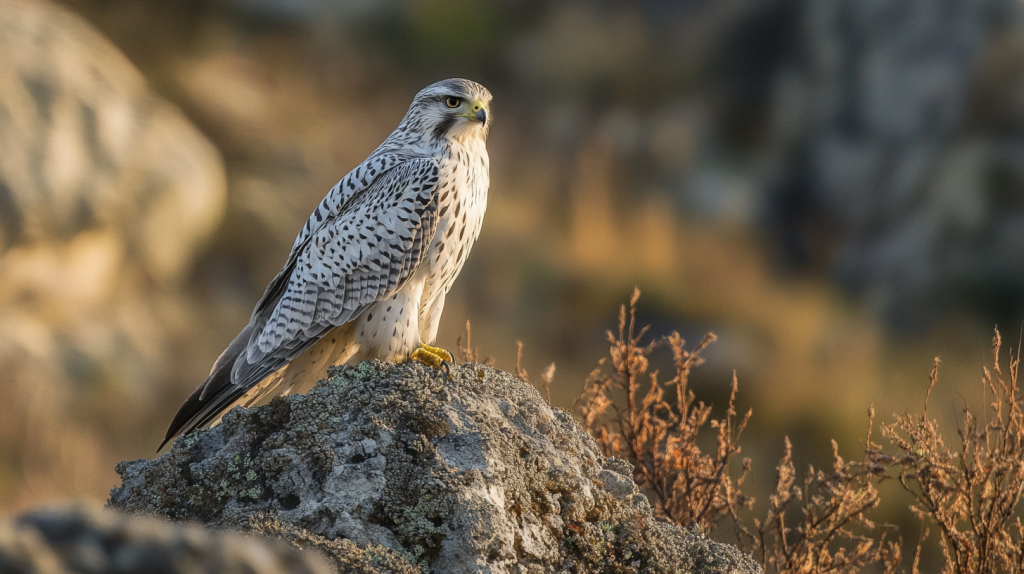
While not as fast as the peregrine falcon in a dive, gyrfalcons are still incredibly swift flyers. They can reach speeds of up to 130 miles per hour when chasing prey in level flight. This speed, combined with their size and strength, makes them formidable aerial predators.
Nesting Habits
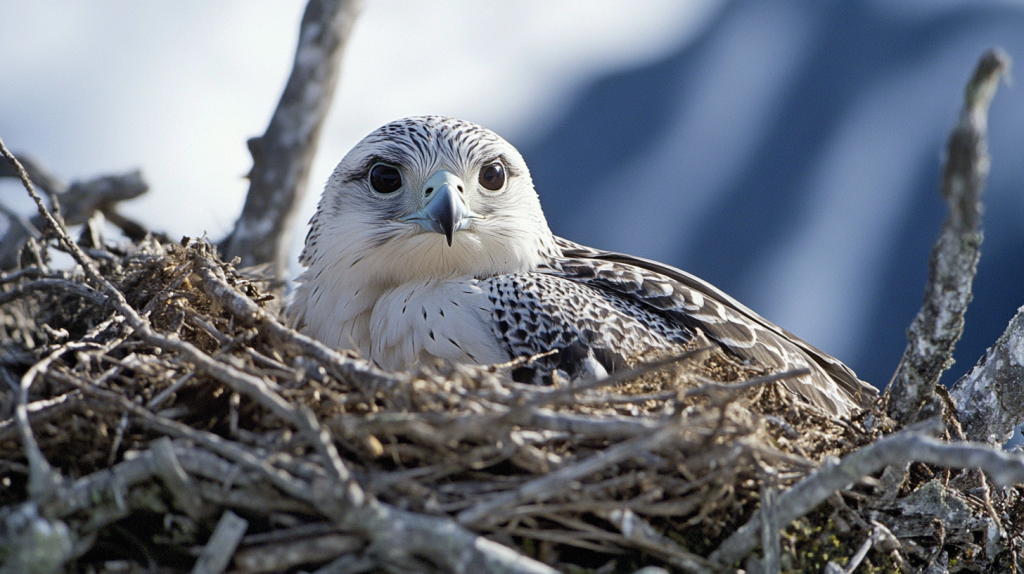
Gyrfalcons don’t build their own nests. Instead, they take over abandoned nests of other large birds, such as ravens or golden eagles. These nests are often located on cliff faces or rocky outcrops, providing a safe vantage point for the falcons to survey their territory.
Long-Distance Travelers
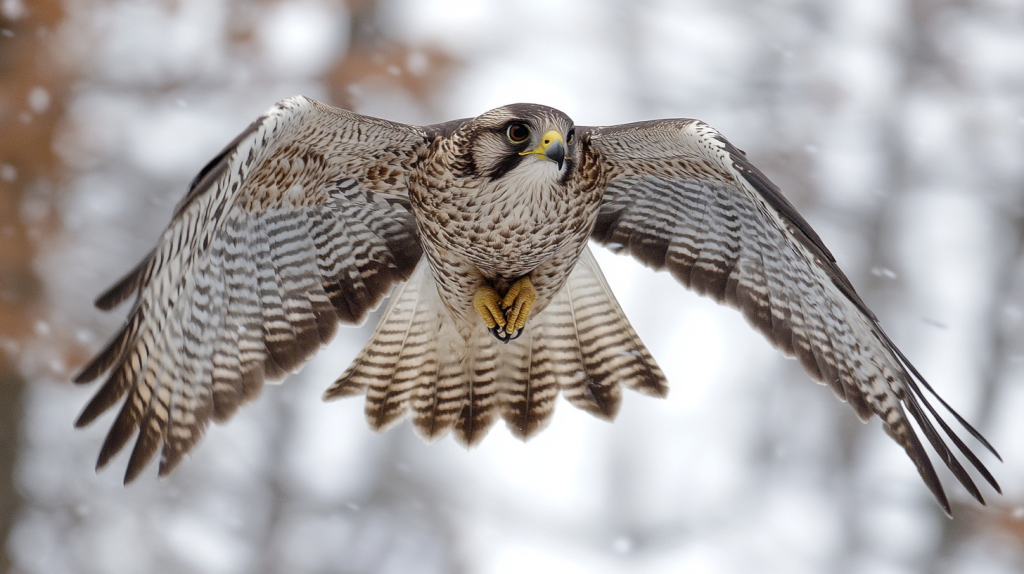
While some gyrfalcons remain in their Arctic breeding grounds year-round, others undertake impressive migrations. Some individuals have been recorded traveling over 3,000 miles from their breeding grounds to their wintering areas. These long-distance flights showcase the gyrfalcon’s incredible endurance and adaptability.
Cultural Significance
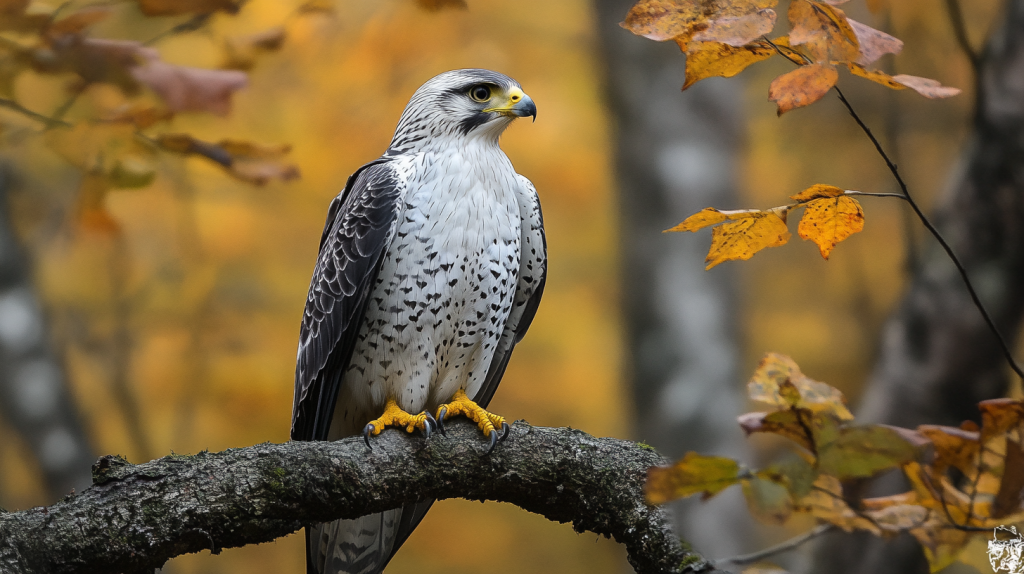
Throughout history, gyrfalcons have held a special place in human culture. They were highly prized by medieval falconers and were often given as gifts between royalty. In some Arctic cultures, gyrfalcons are seen as spiritual creatures and feature prominently in traditional stories and art.
Unique Vocalization
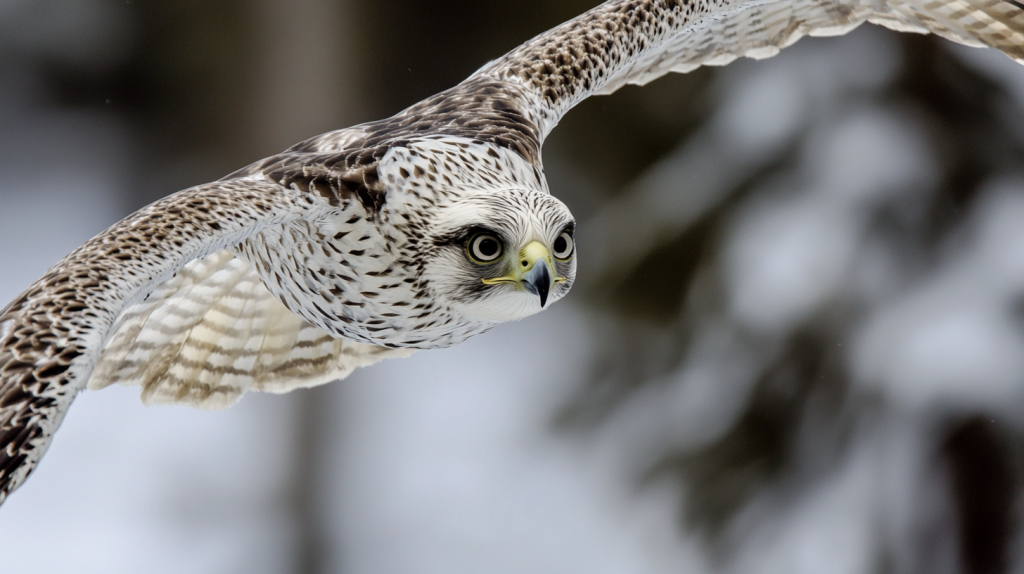
Gyrfalcons have a distinctive call that sets them apart from other falcon species. Their vocalizations are described as a rapid series of harsh, guttural “kak-kak-kak” sounds. These calls are often used to communicate between mates or to warn off intruders from their territory.
Impressive Lifespan
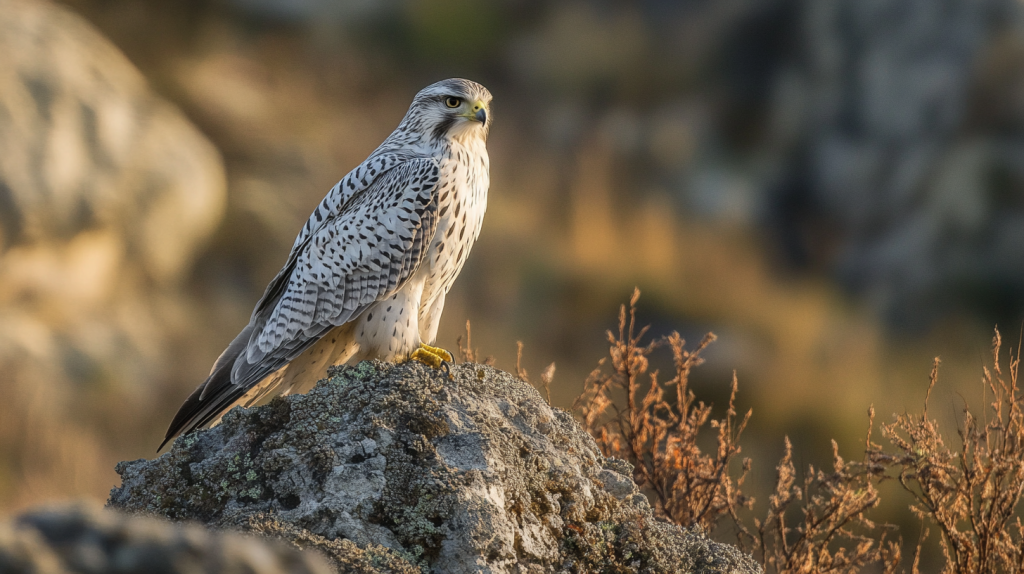
In the wild, gyrfalcons can live up to 20 years, which is quite long for a bird of their size. However, their first year of life is the most challenging, with many young birds not surviving to adulthood. Those that do make it past their first year have a good chance of living a long life.
Monogamous Pairs
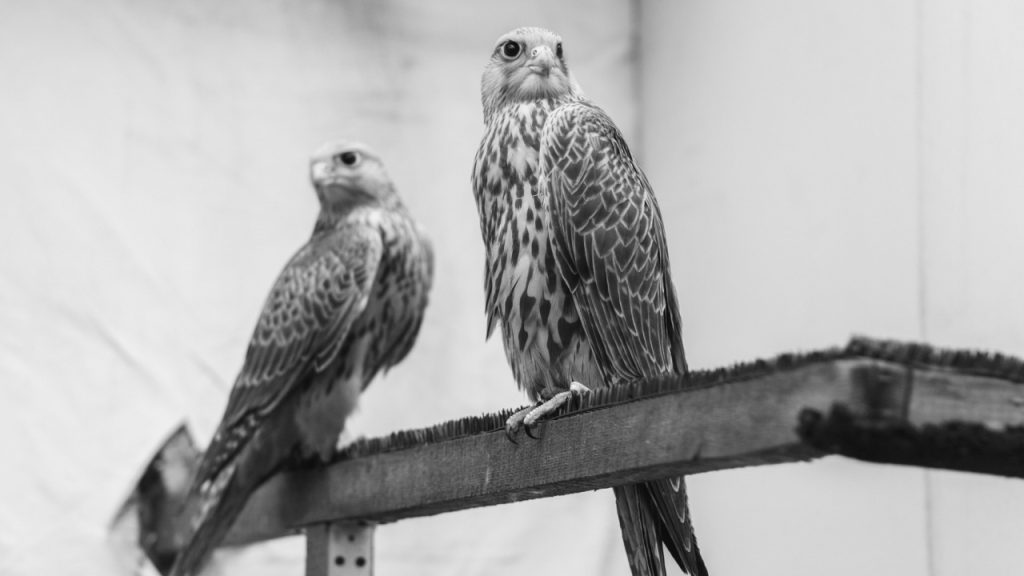
Gyrfalcons typically form monogamous pairs and often mate for life. These pairs will return to the same nesting site year after year if conditions remain favorable. The strong bond between mates helps ensure successful breeding and the survival of their offspring in the challenging Arctic environment.
Threat From Climate Change
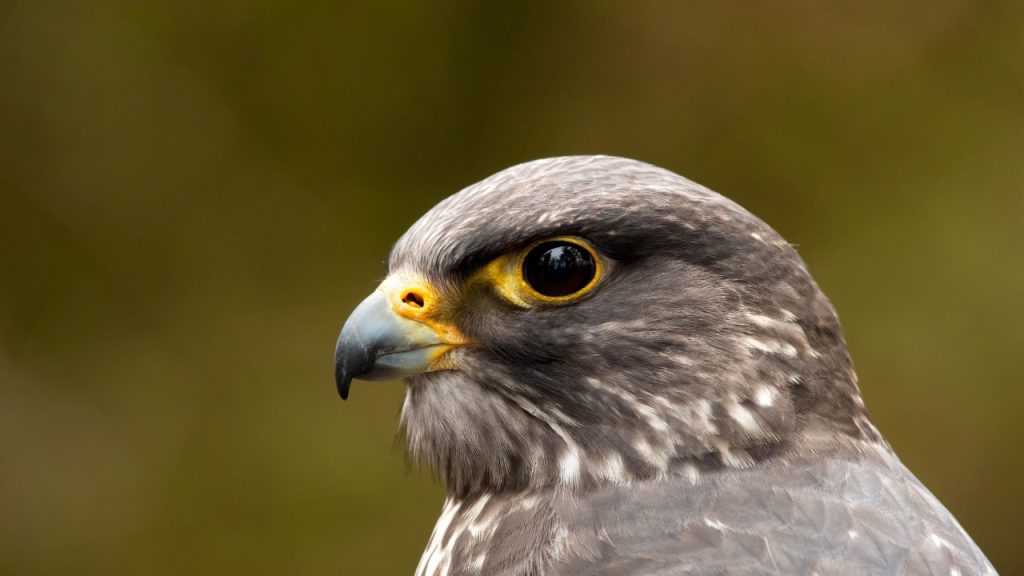
As Arctic specialists, gyrfalcons are particularly vulnerable to the effects of climate change. Rising temperatures are altering their habitat and affecting the availability of their prey. These changes could have significant impacts on gyrfalcon populations in the coming years, making conservation efforts crucial.
Unique Hunting Technique
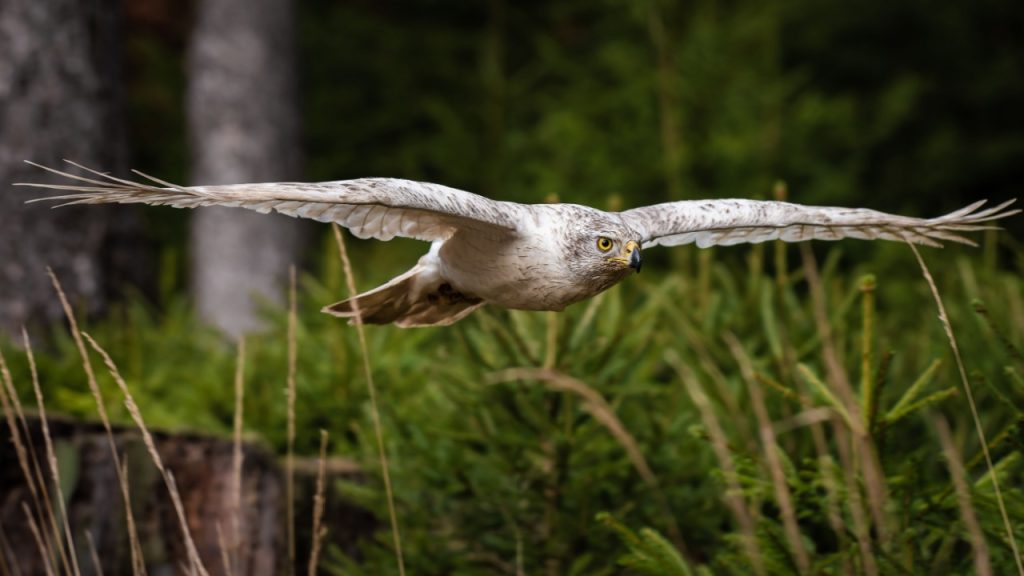
Gyrfalcons have a unique hunting technique called “contour hugging.” They fly low to the ground, using the terrain to hide their approach from potential prey. This stealthy method allows them to surprise their targets, increasing their hunting success rate.
Falconry Favorite
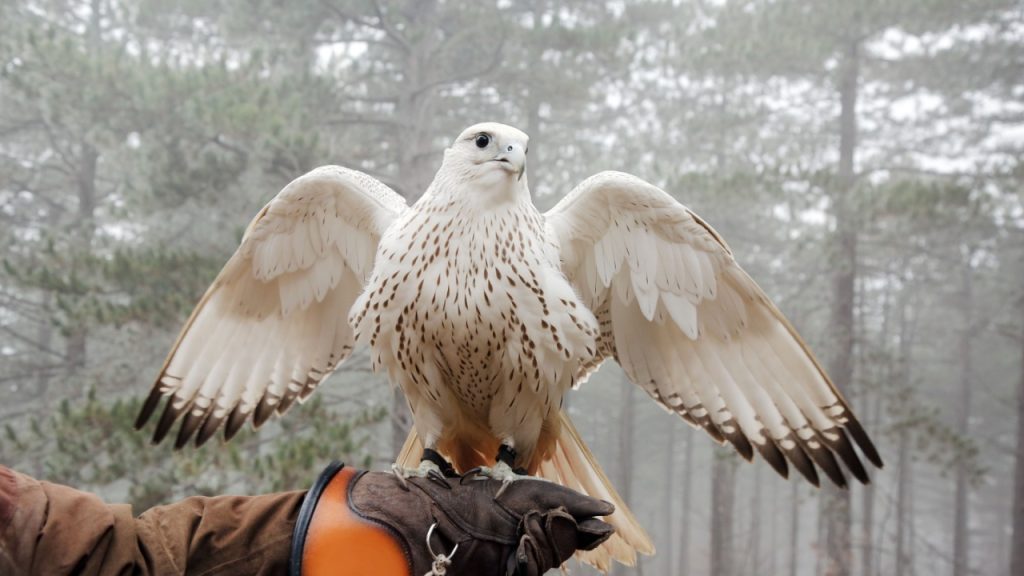
Due to their size, power, and striking appearance, gyrfalcons have long been prized in the world of falconry. They are considered one of the most challenging and rewarding birds to train. However, the use of gyrfalcons in falconry is now strictly regulated to protect wild populations.

